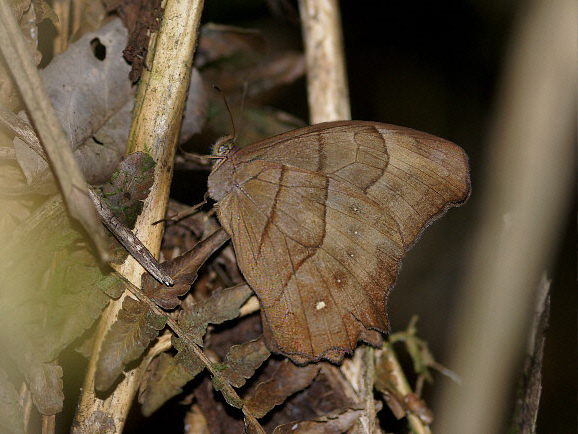
Introduction
There are 1100 known species of Satyrinae in the neotropical region. About 400 of these are placed in the Euptychiina. Butterflies within this tribe include the ‘ringlet’ genera Euptychia, Magneuptychia, Harjesia, Cissia, Caeruleuptychia, Magneuptychia, Harjesia etc; together with Oressinoma and the various ‘wood nymph’ genera i.e. Parataygetis, Posttaygetis and Taygetis. Most are inhabitants of the forest understorey and tend to fly close to the ground. They generally avoid sunlight and prefer to fly at dawn or on cloudy days when light levels and temperatures are low.
There are 3 Taygetomorpha species – celia, puritana, and an un-named Ecuadorian species recently discovered by Miller. In common with members of the closely related genus Taygetis the butterflies exhibit seasonal dimorphism – both forms of puritana are similarly marked, but the dry season form is a warmer shade of brown.
Taygetomorpha puritana is found in Colombia, Ecuador, Peru and Bolivia.
Habitats
This species breeds in lowland rainforest at altitudes between about 200-800m.
Lifecycle
To be completed.
Adult behaviour
Taygetomorpha fly in the forest understorey in the early mornings, between about 0800-0900hrs. At other times they usually hide away amongst the rootlets of palms or amongst leaf litter around the base of trees. The adults fly only very short distances, rarely more than 2-3 metres at a time, and always less than 1 metre above ground level.
